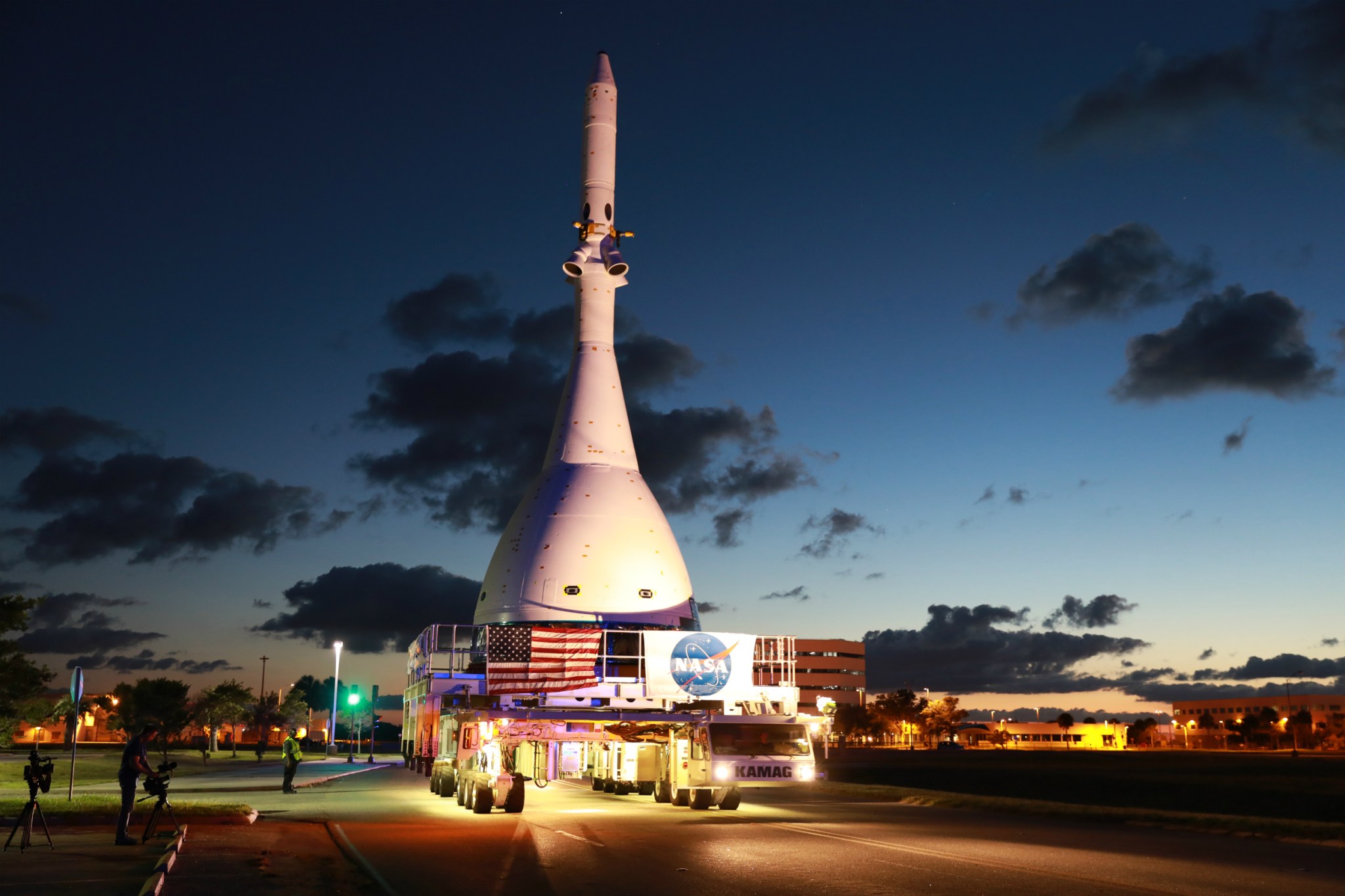
Media accreditation is open for an uncrewed flight test of the launch abort system of NASA’s Orion spacecraft on Tuesday, July 2. This test, Ascent Abort-2, will demonstrate the abort system can activate, steer the spacecraft, and carry astronauts to a safe distance if an emergency arises during Orion’s climb to orbit.
A 22,000-pound test version of the Orion spacecraft is scheduled to launch from Space Launch Complex 46 at Cape Canaveral Air Force Station (CCAFS) in Florida on a rocket provided by Northrop Grumman.
Media prelaunch and launch activities will take place at NASA’s Kennedy Space Center in Florida. International media must apply by 4 p.m. EDT, Monday, May 27, for access to Kennedy and CCAFS. U.S. media must apply by 9 p.m. Friday, June 14. All accreditation requests should be submitted online at:
For questions about accreditation, please email ksc-media-accreditat@mail.nasa.gov. For more information, contact Kennedy’s newsroom at 321-867-2468.
During the three-minute test, the spacecraft, with a fully functional launch abort system, will climb to an altitude of about six miles, traveling at more than 1,000 miles per hour. At that point, the system’s powerful abort motor will fire, pulling Orion away from the booster.
Designing a system for human spaceflight means ensuring there are features in place that protect the astronauts aboard. Data gathered from this test will be used to validate and improve computer models of the spacecraft launch abort system’s performance and functions.
NASA is working to land the first woman and next man on the Moon by 2024. Orion is part of NASA’s backbone for deep space exploration, along with the Space Launch System rocket and Gateway in orbit around the Moon. Orion will sustain astronauts in deep space, provide emergency abort capability, and support a safe re-entry from lunar return velocities. Exploring the Moon helps create a vibrant future and advance technologies, capabilities and new opportunities for future missions to Mars.
For more information about the Orion spacecraft and Launch Abort System, visit:
-end-
Kathryn Hambleton
Headquarters, Washington
202-358-1100
kathryn.a.hambleton@nasa.gov
Amanda Griffin / Brittney Thorpe
Kennedy Space Center, Fla.
321-867-2468
amanda.griffin@nasa.gov / brittney.thorpe@nasa.gov
Laura Rochon / Rachel Kraft
Johnson Space Center, Houston
281-483-5111
laura.a.rochon@nasa.gov / rachel.h.kraft@nasa.gov


























